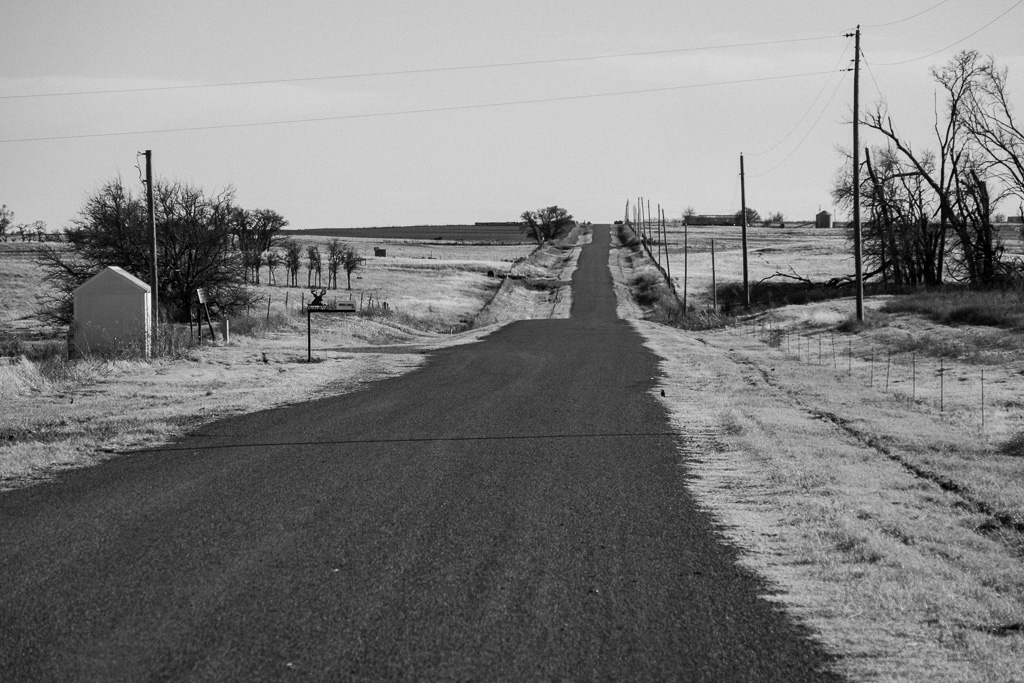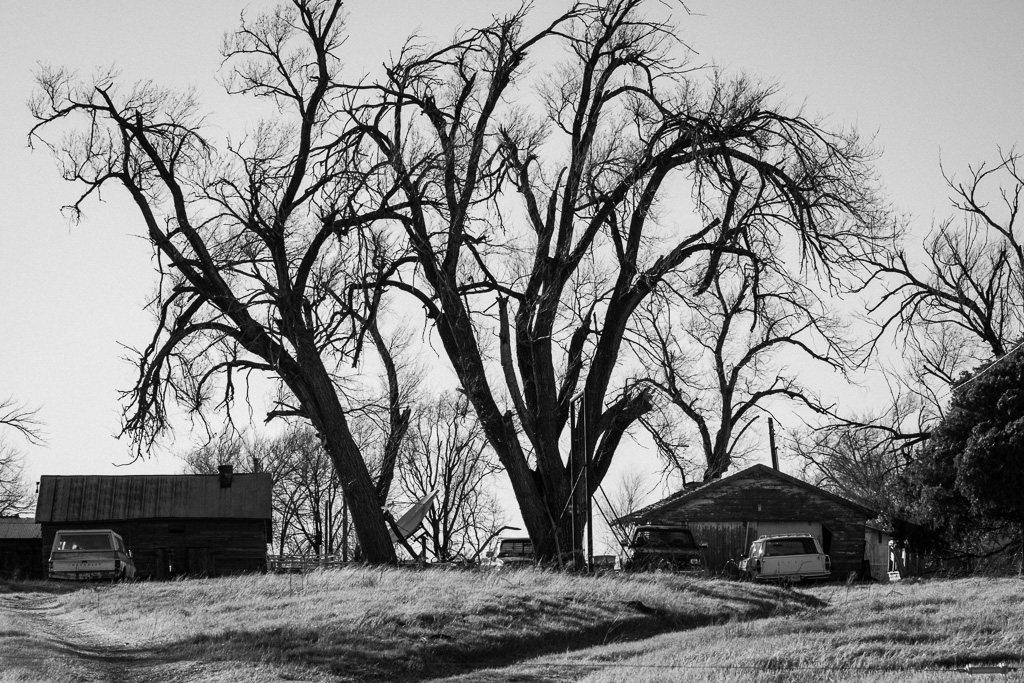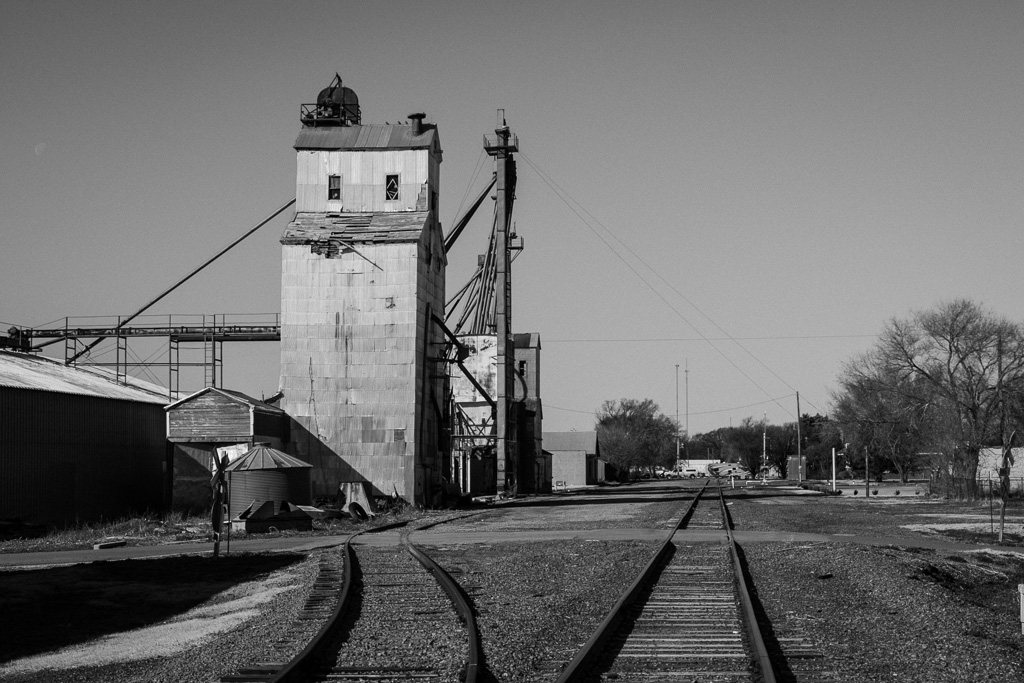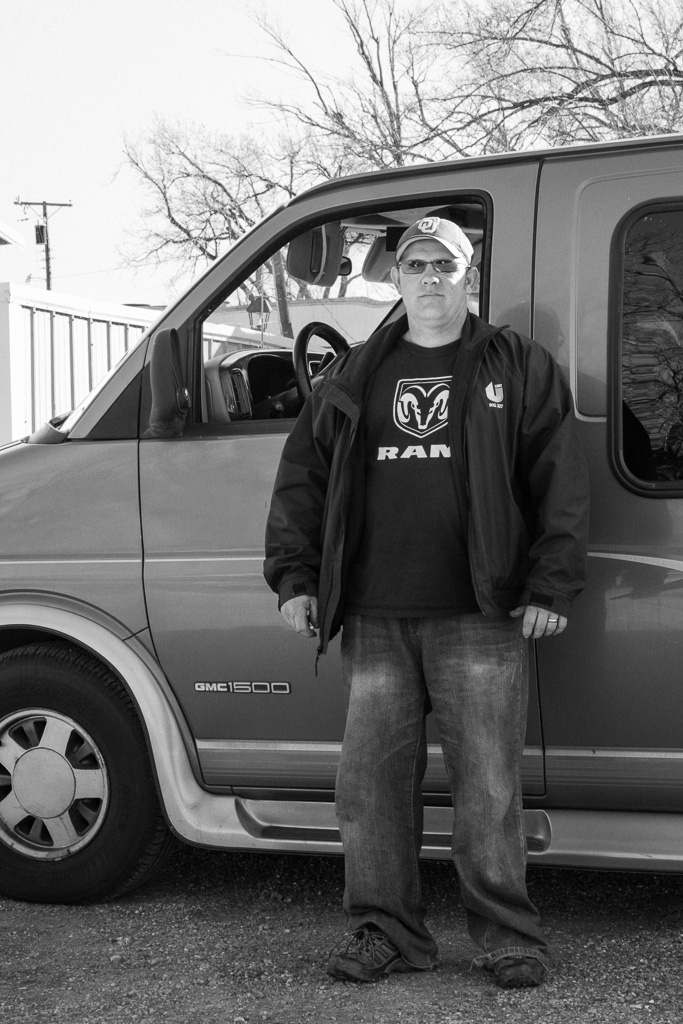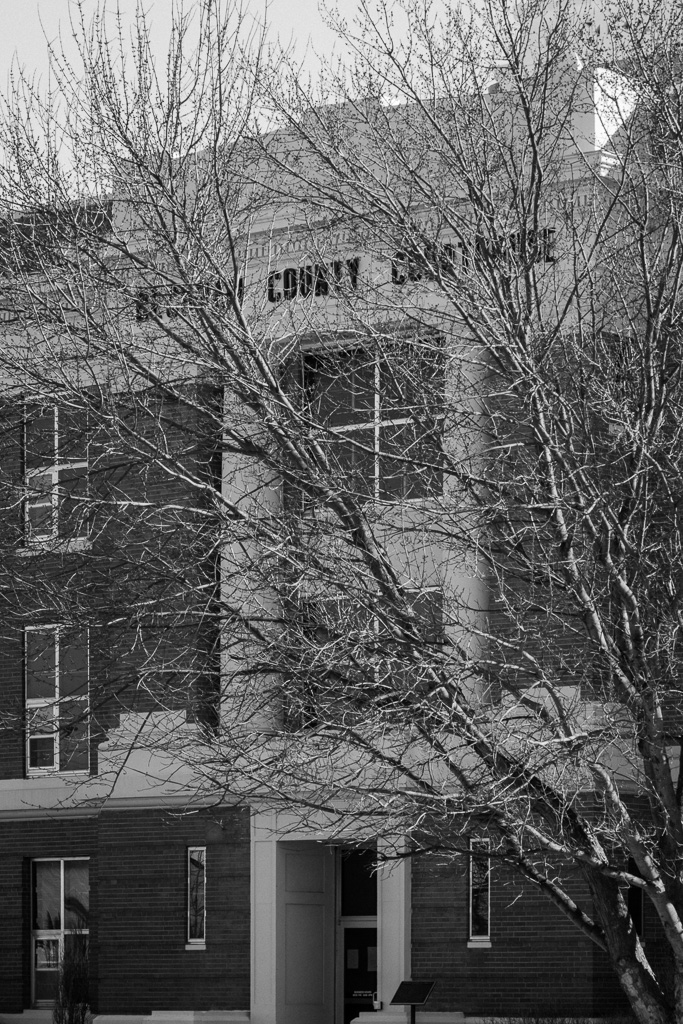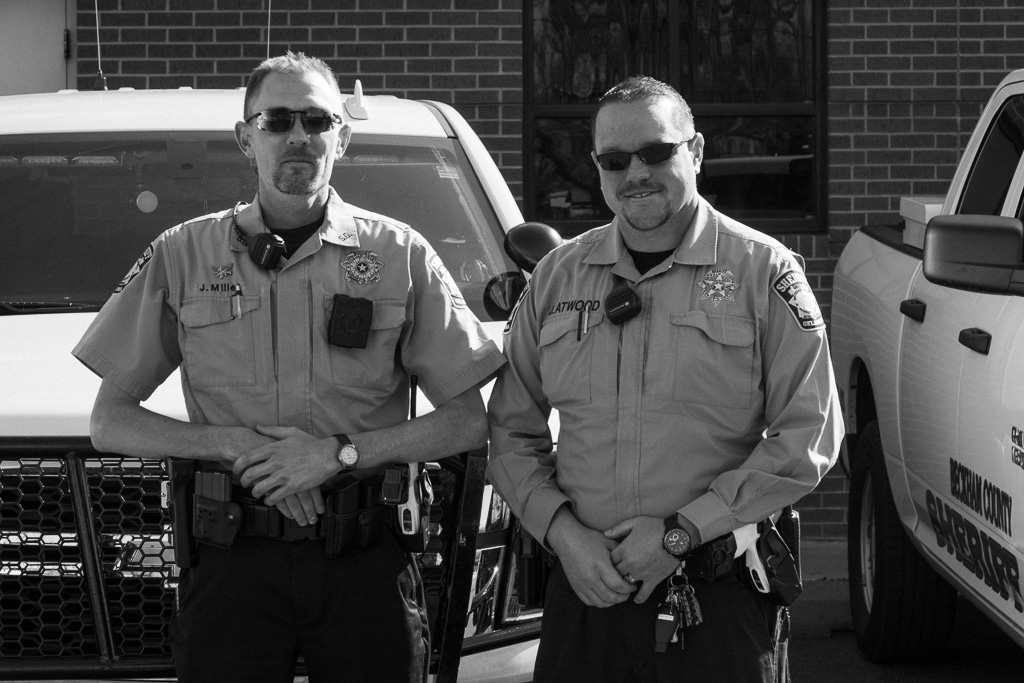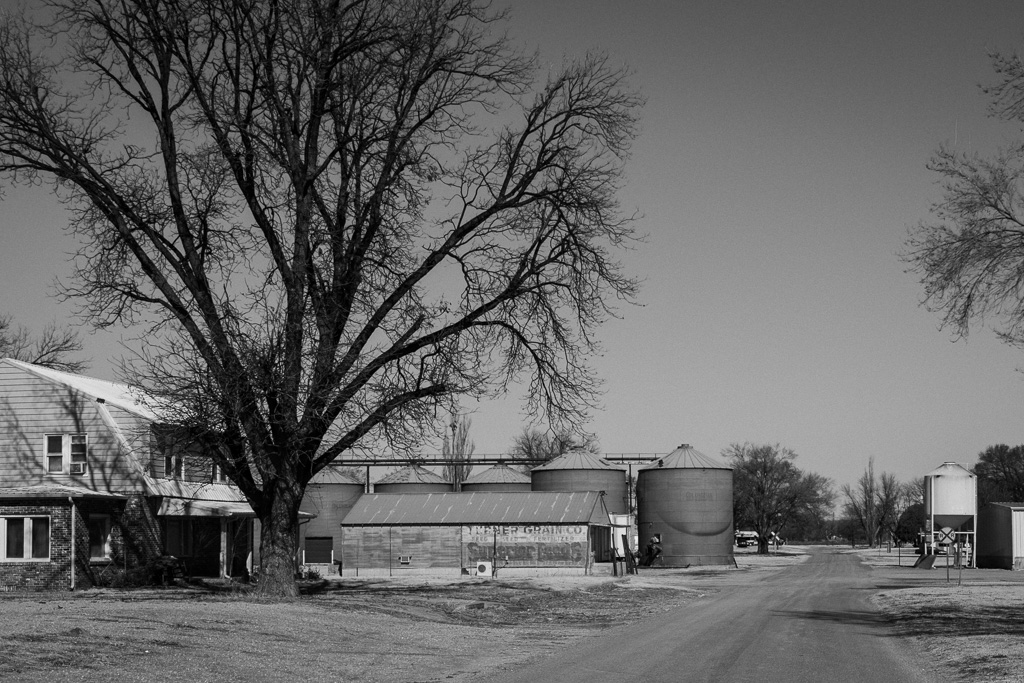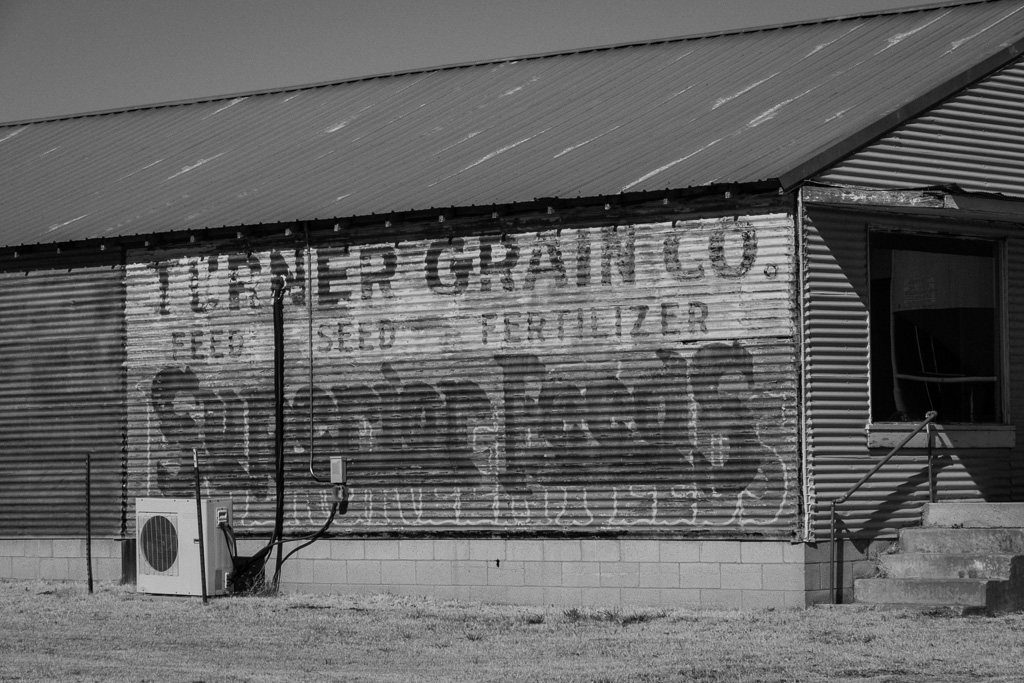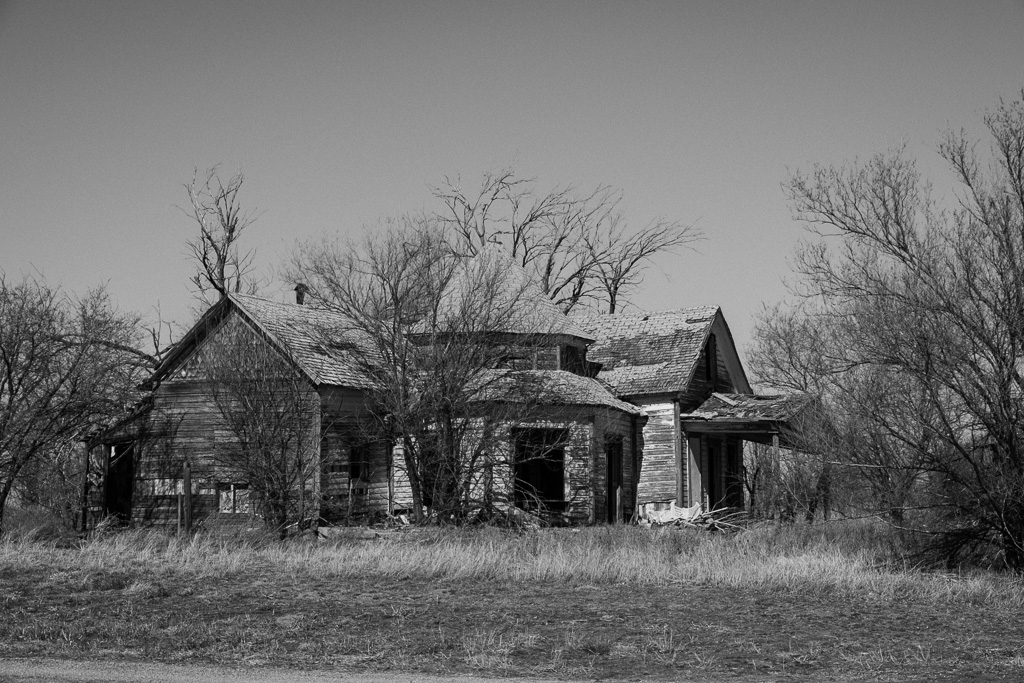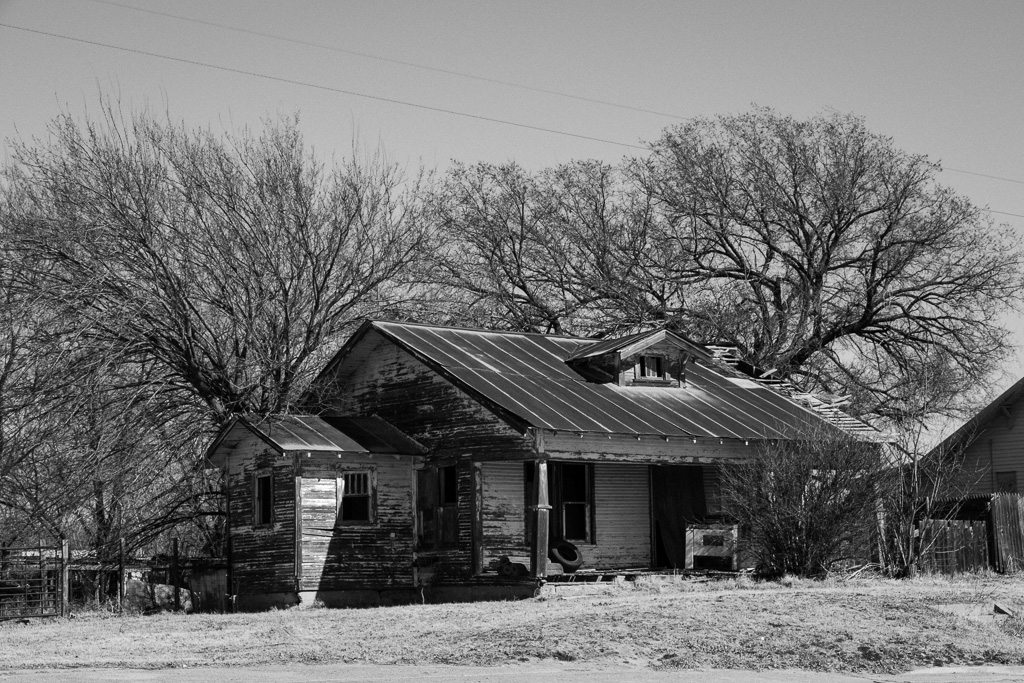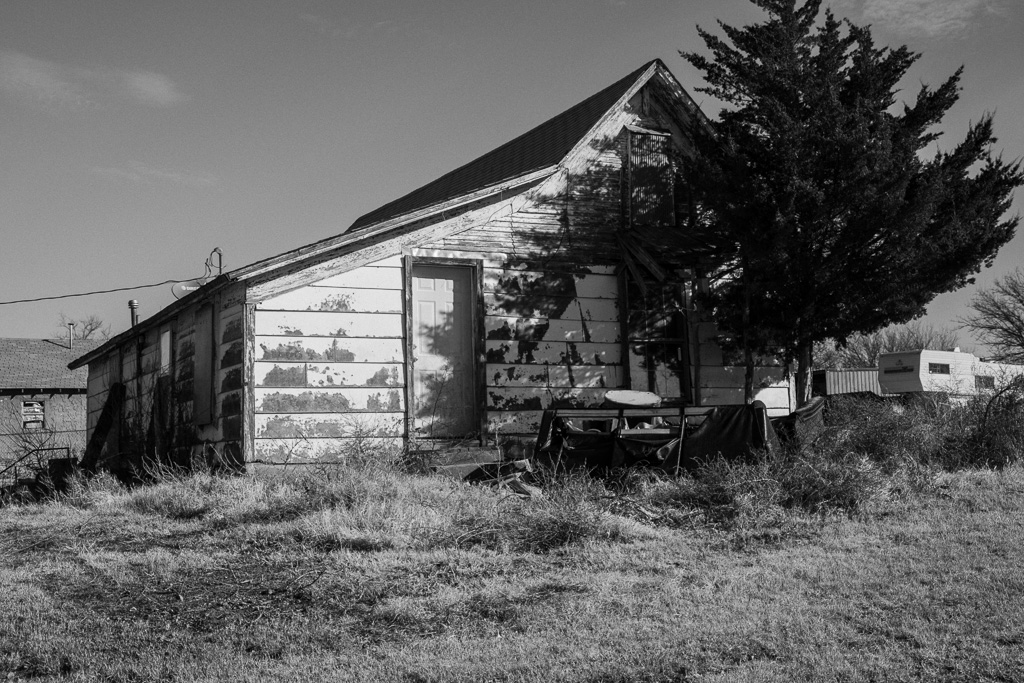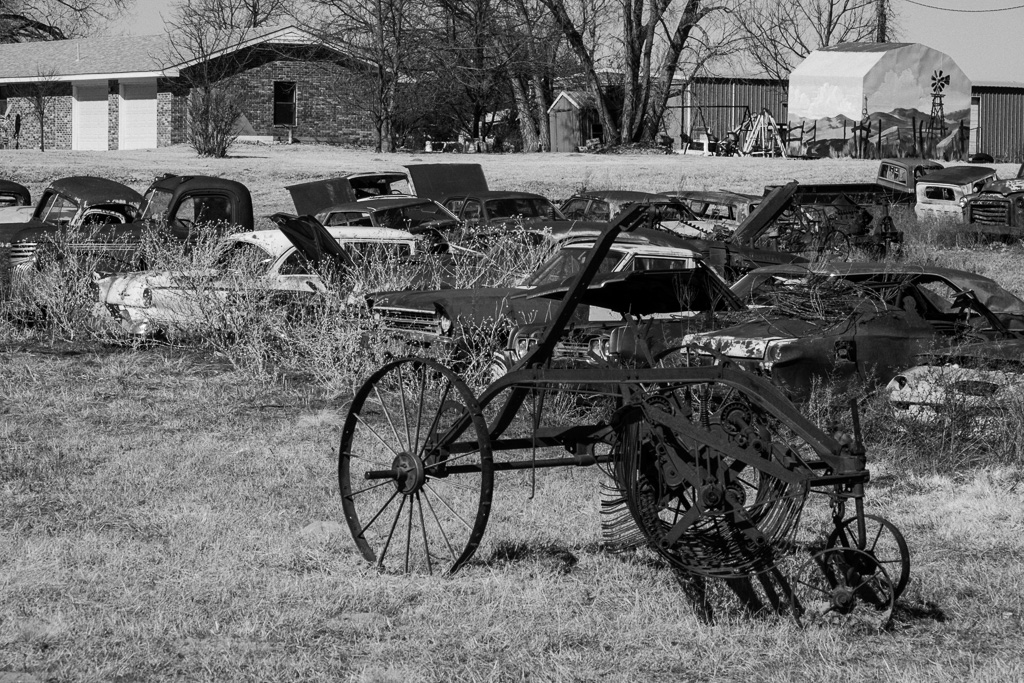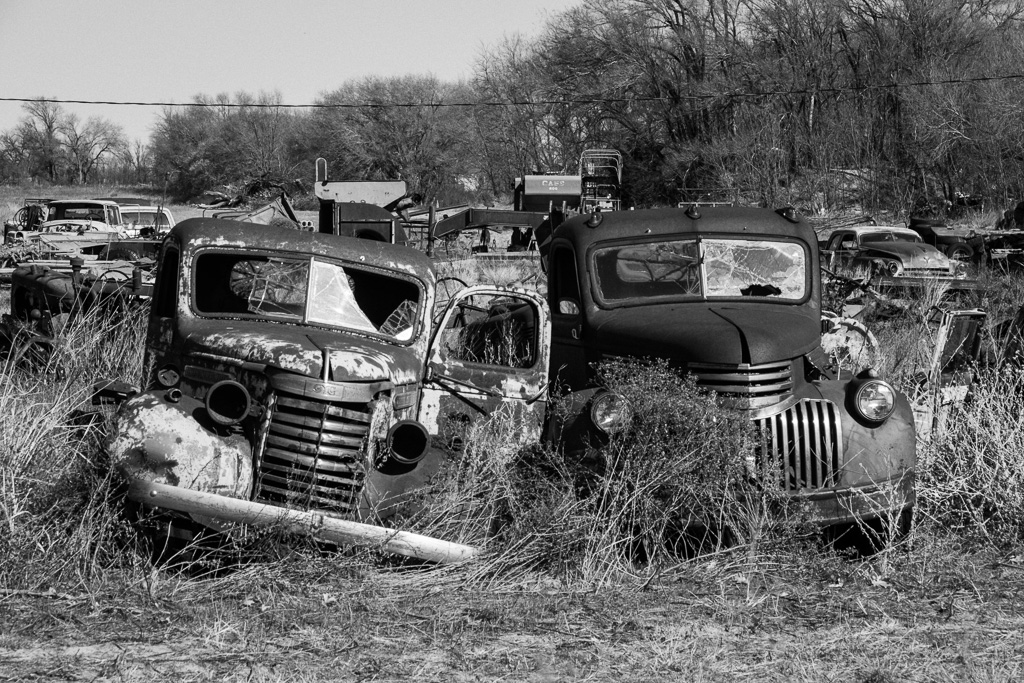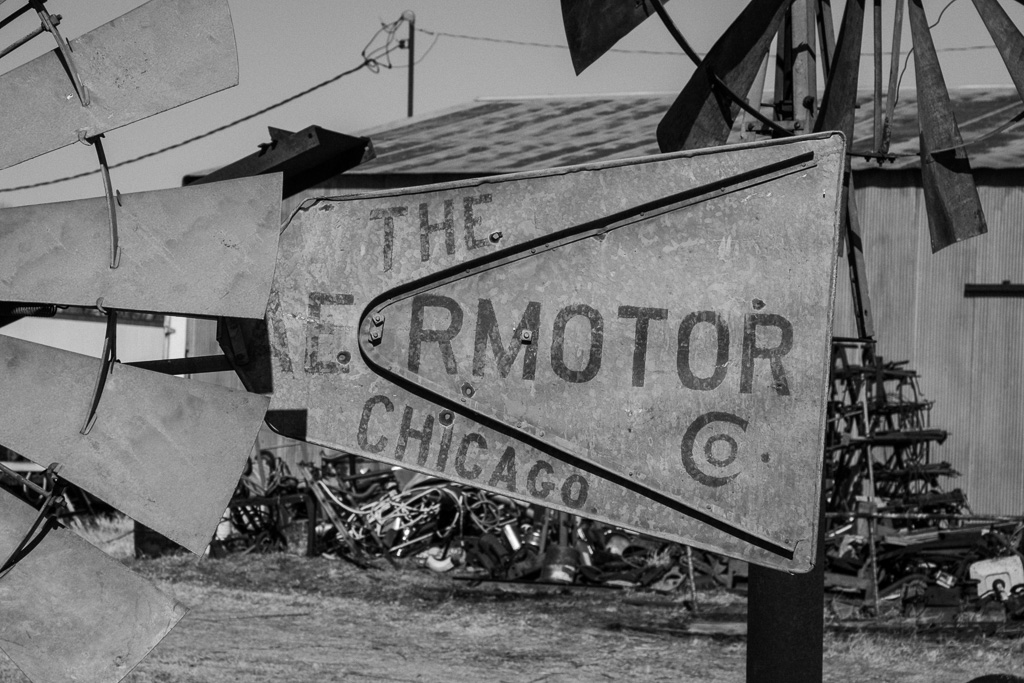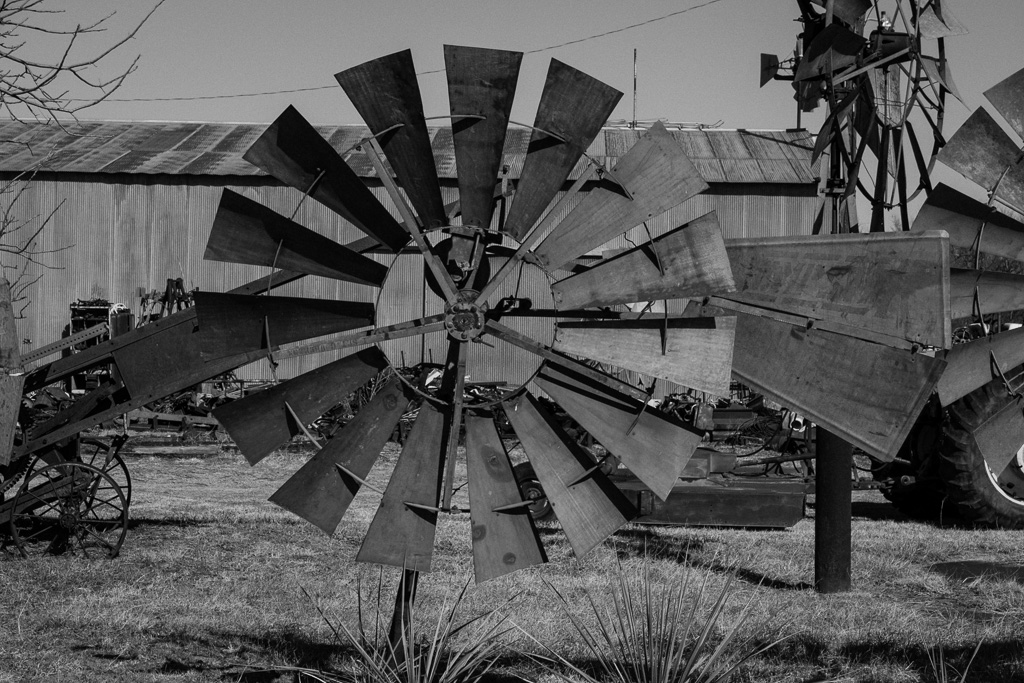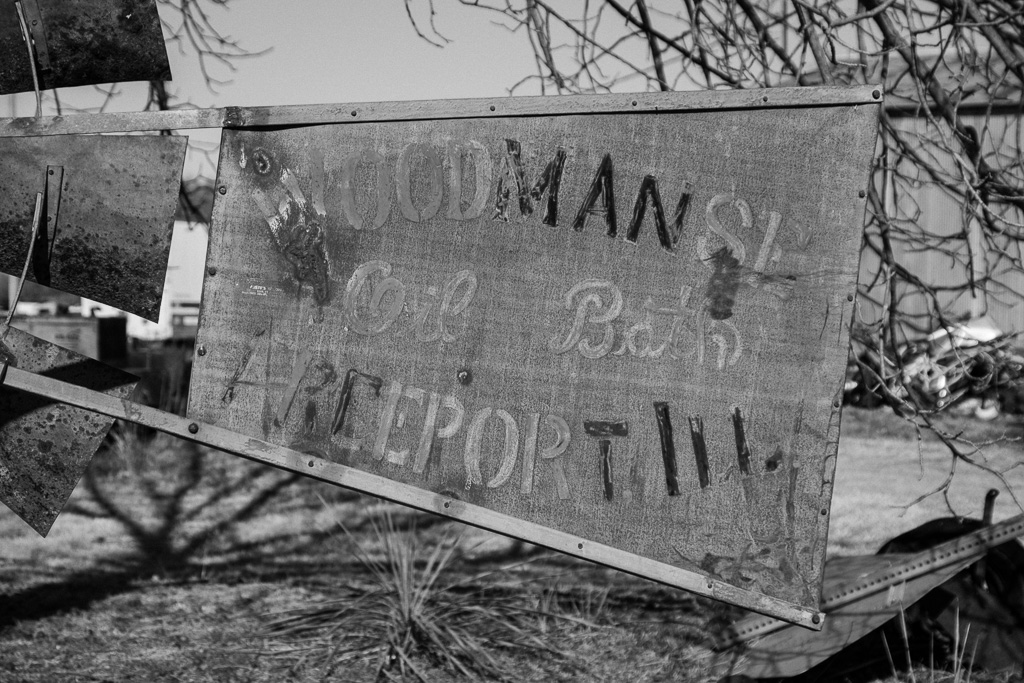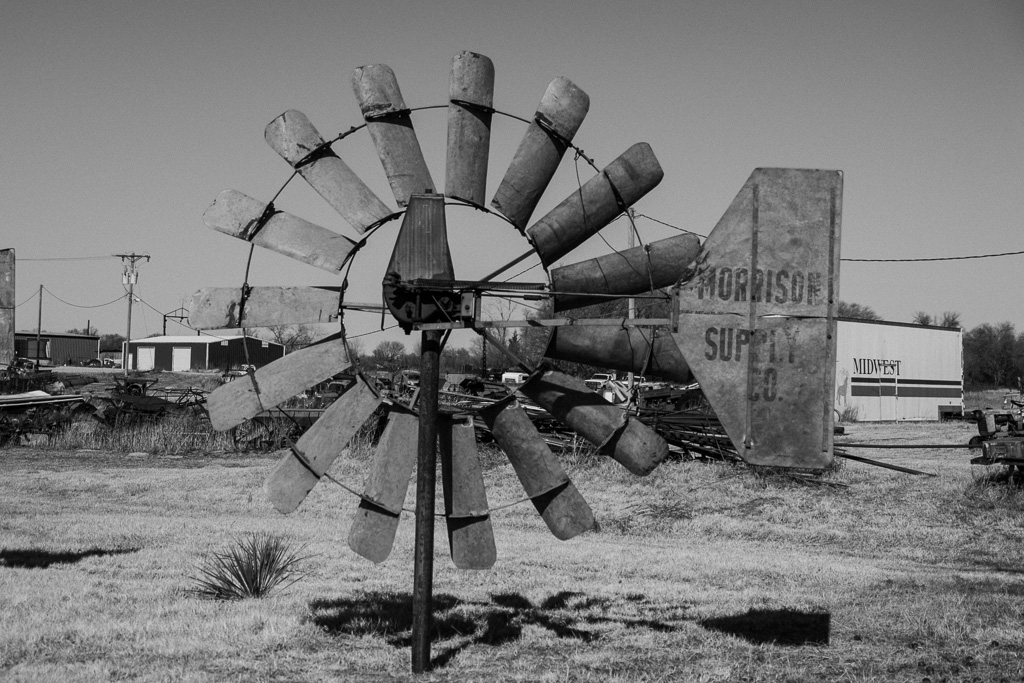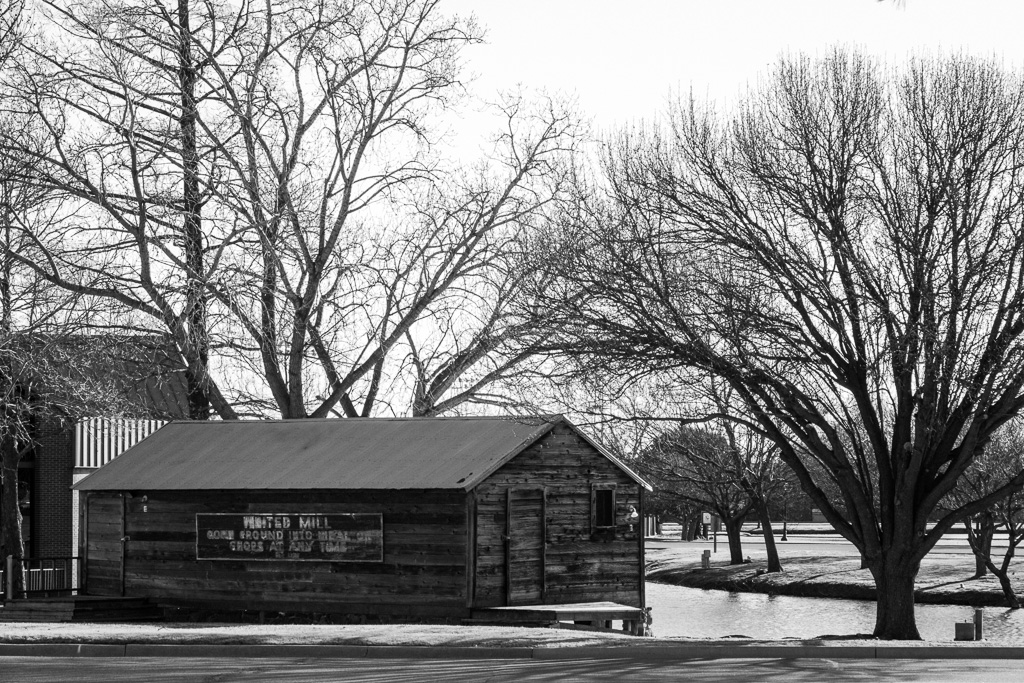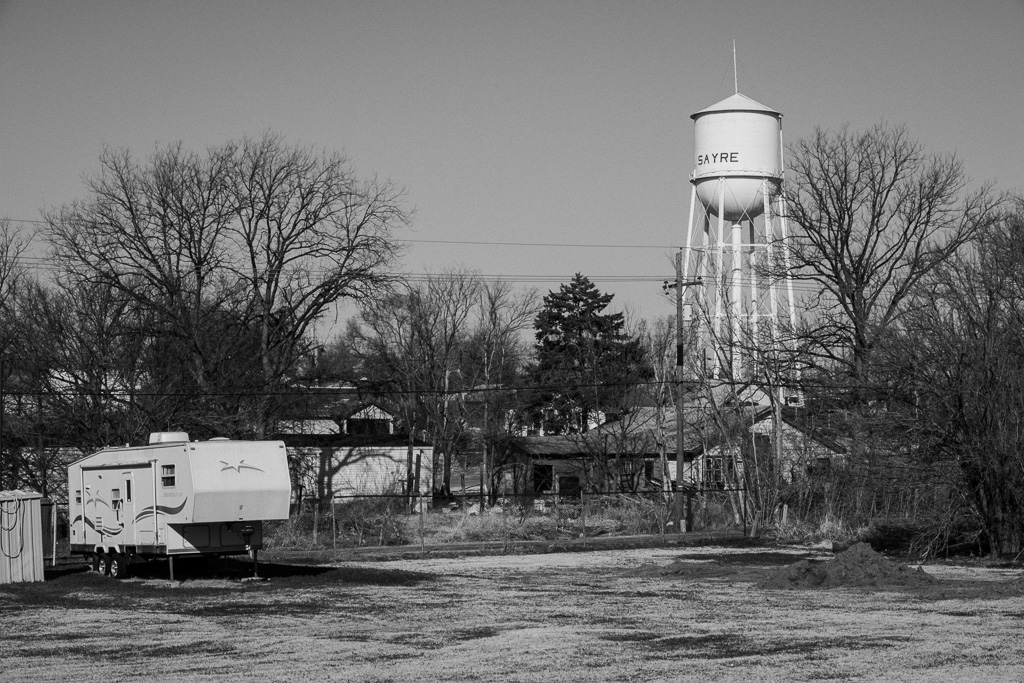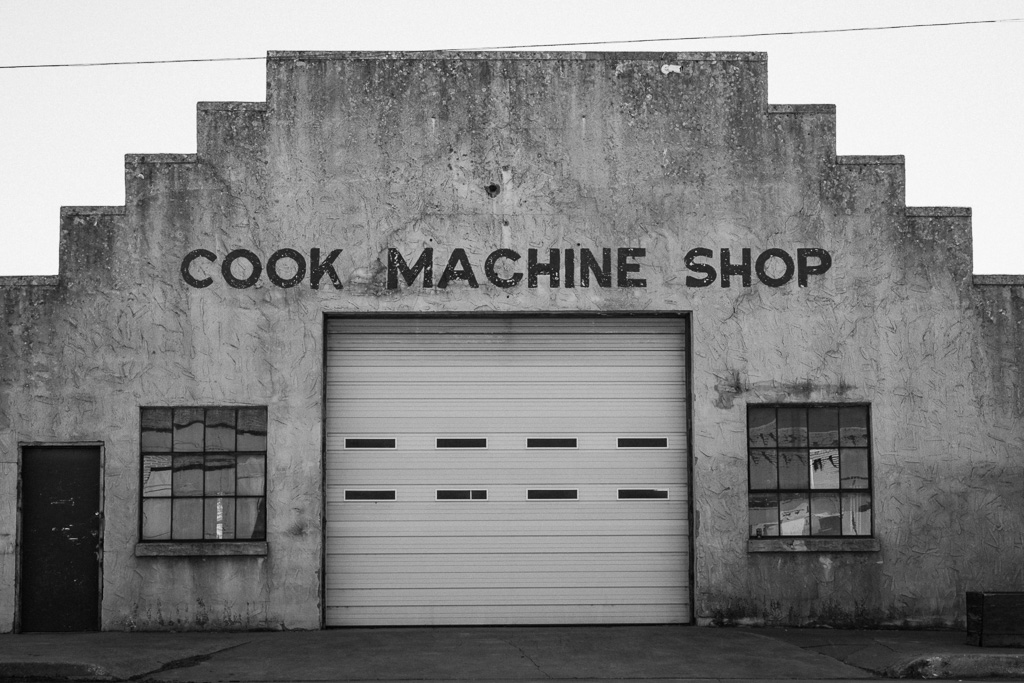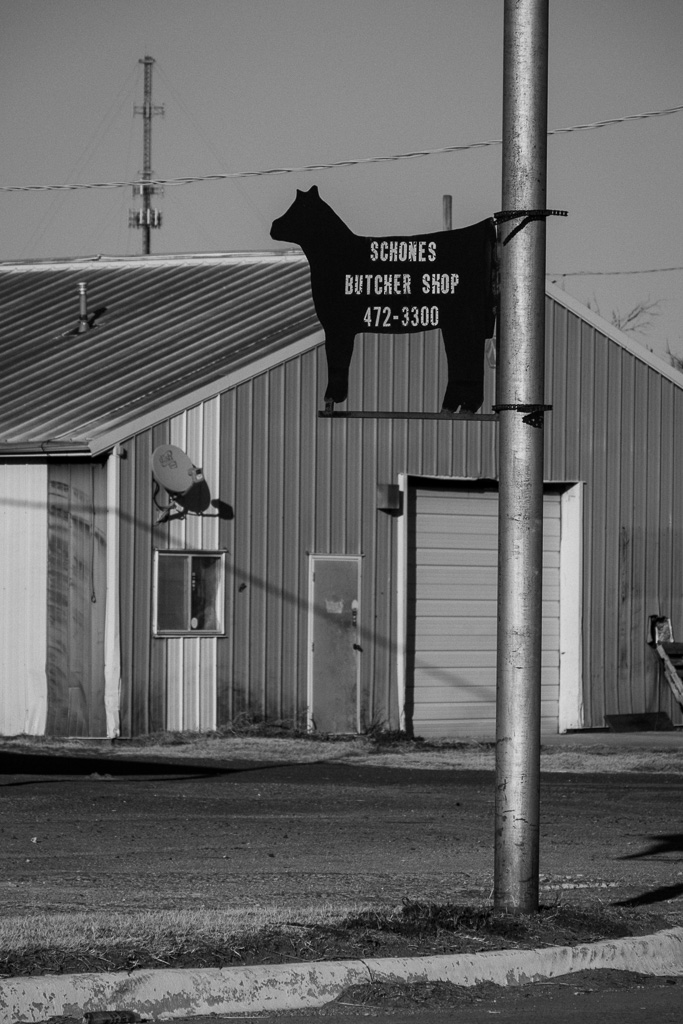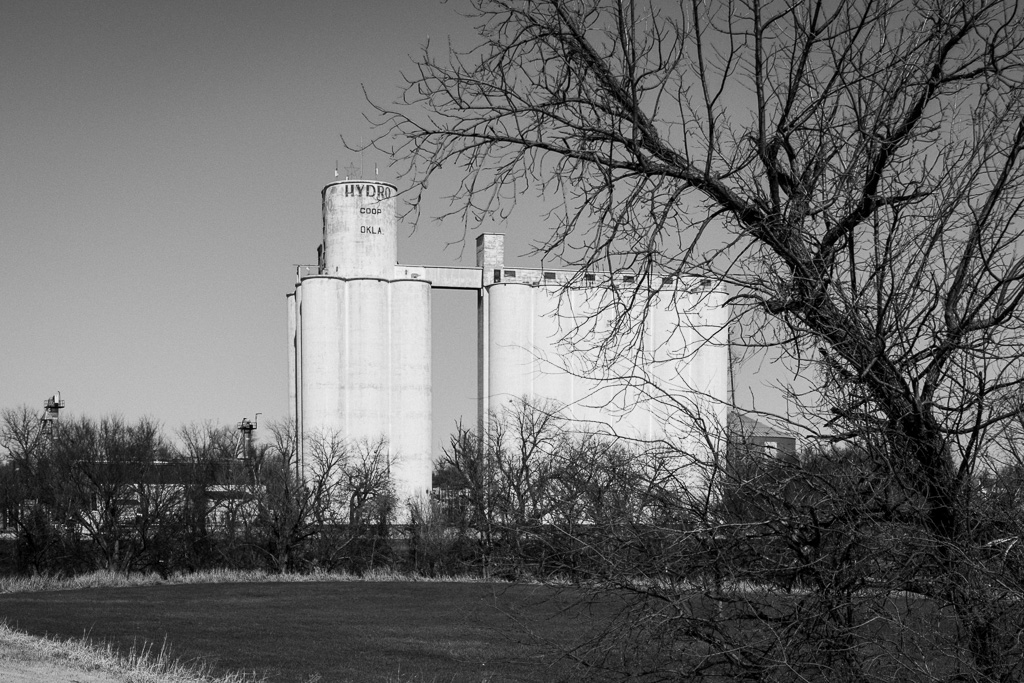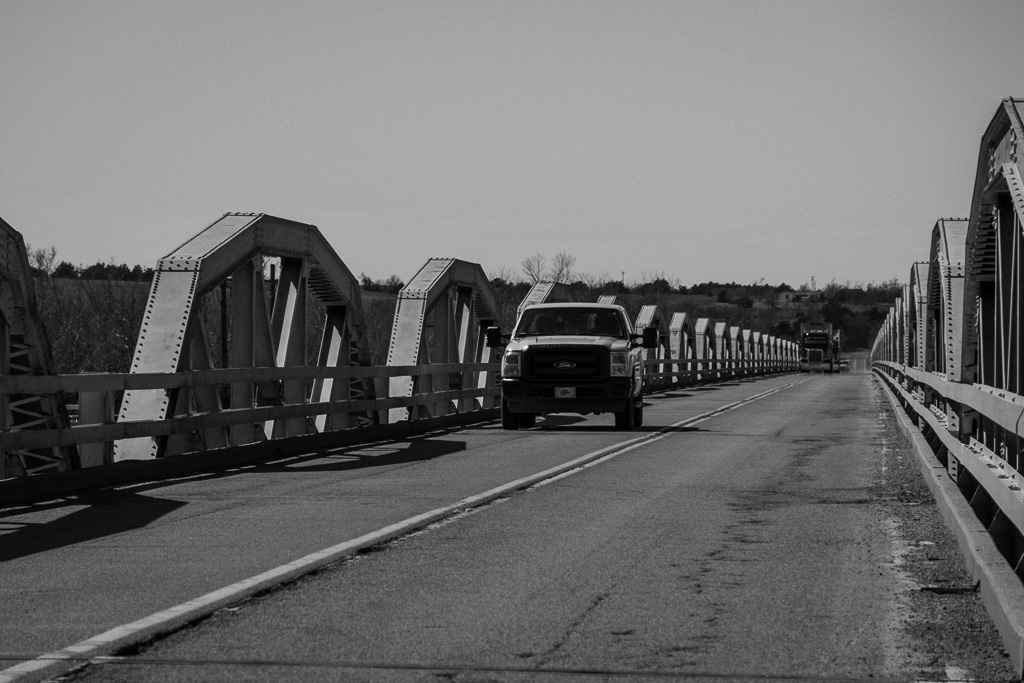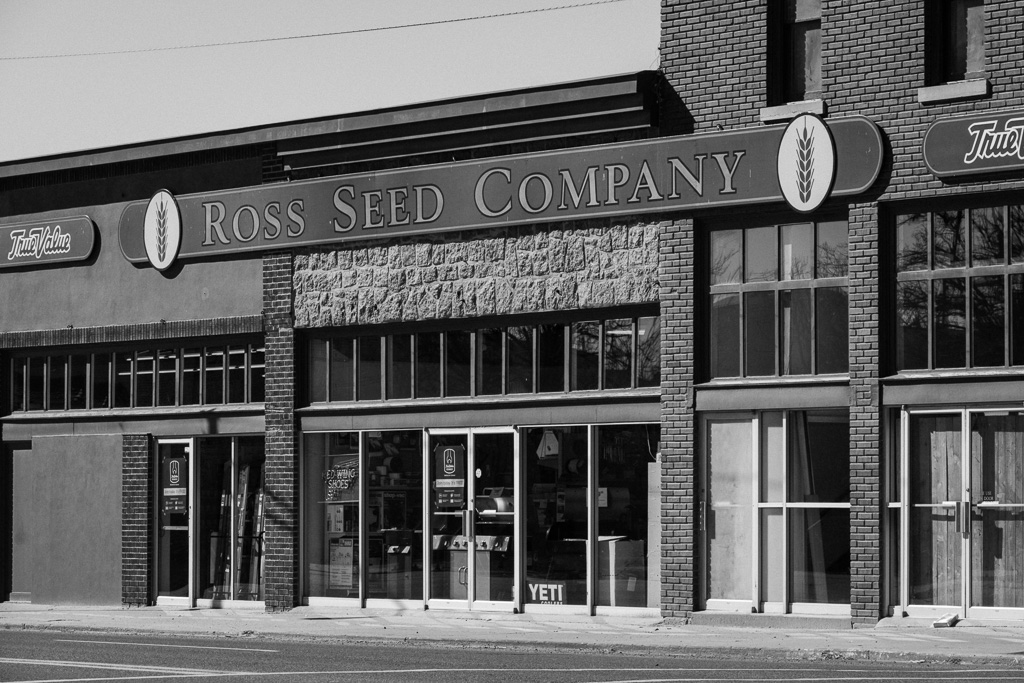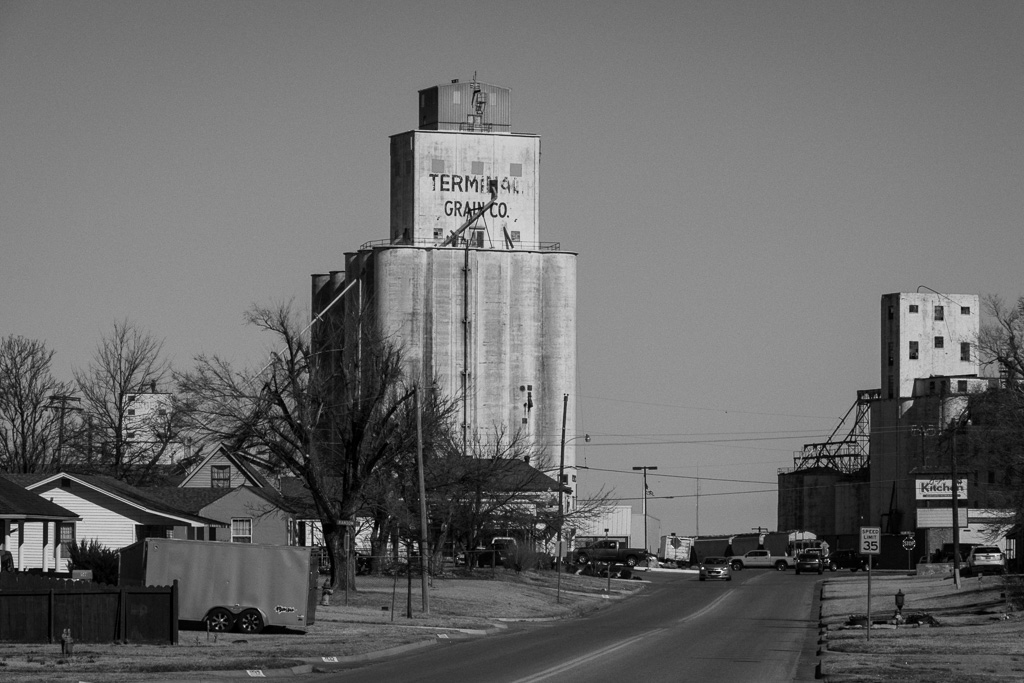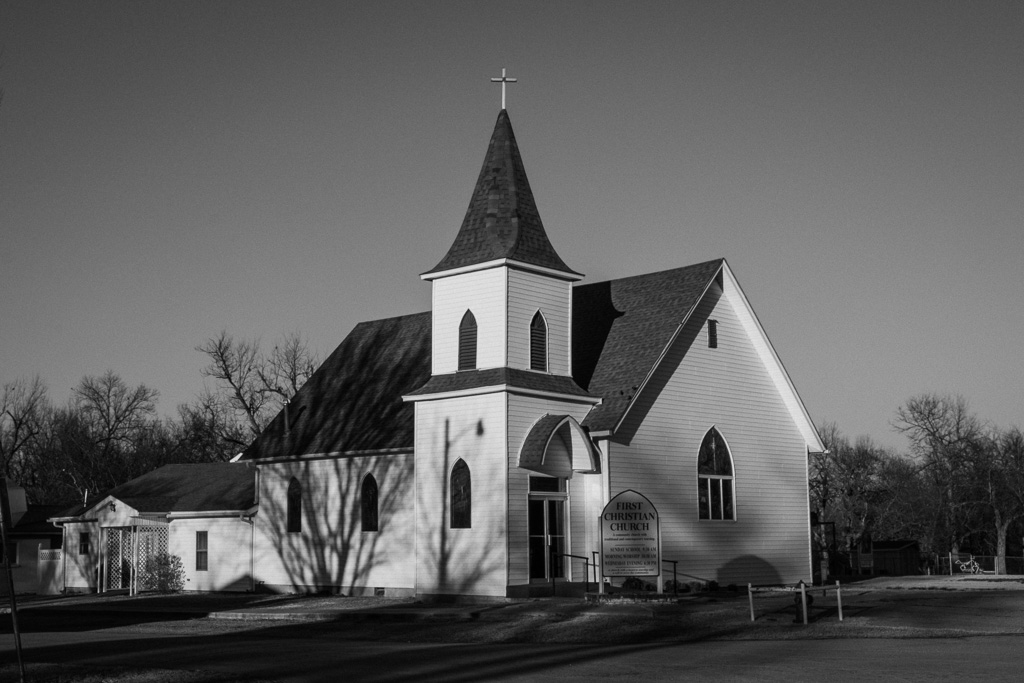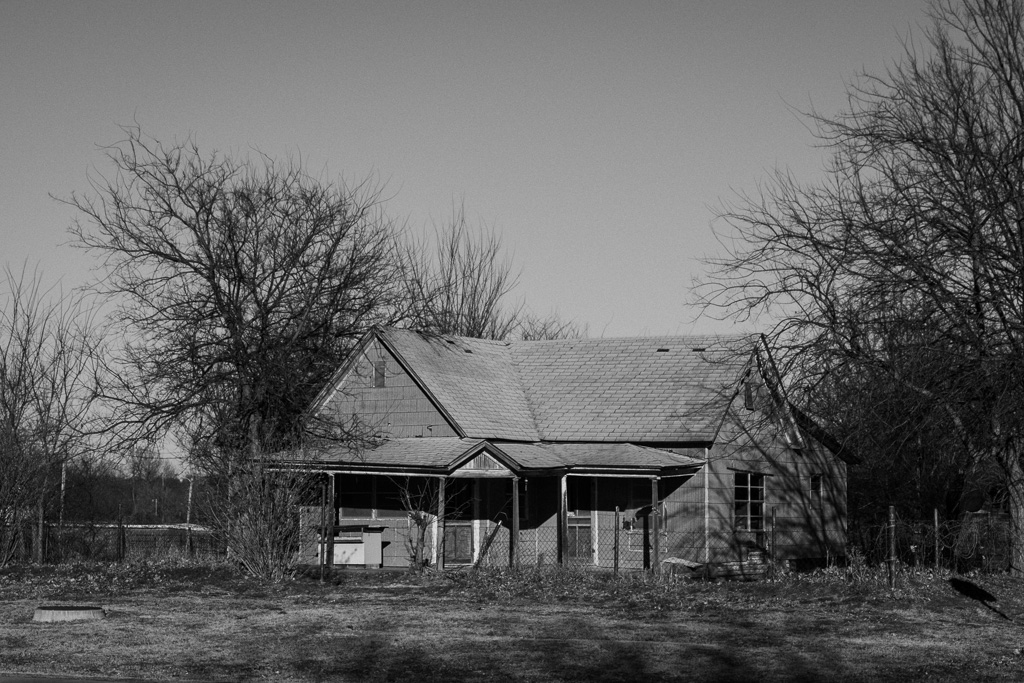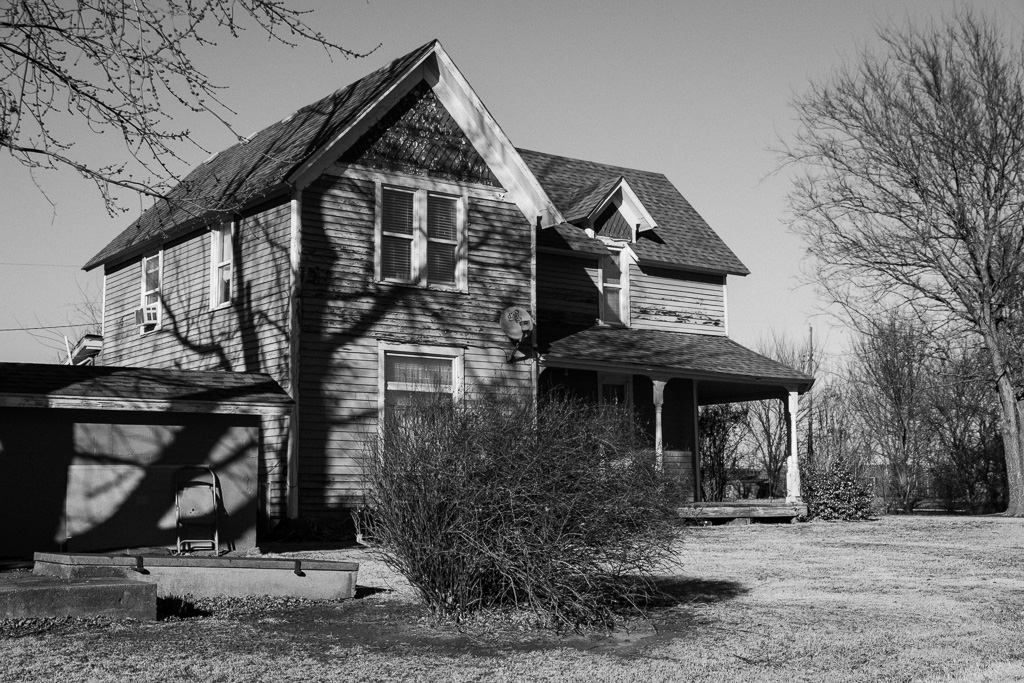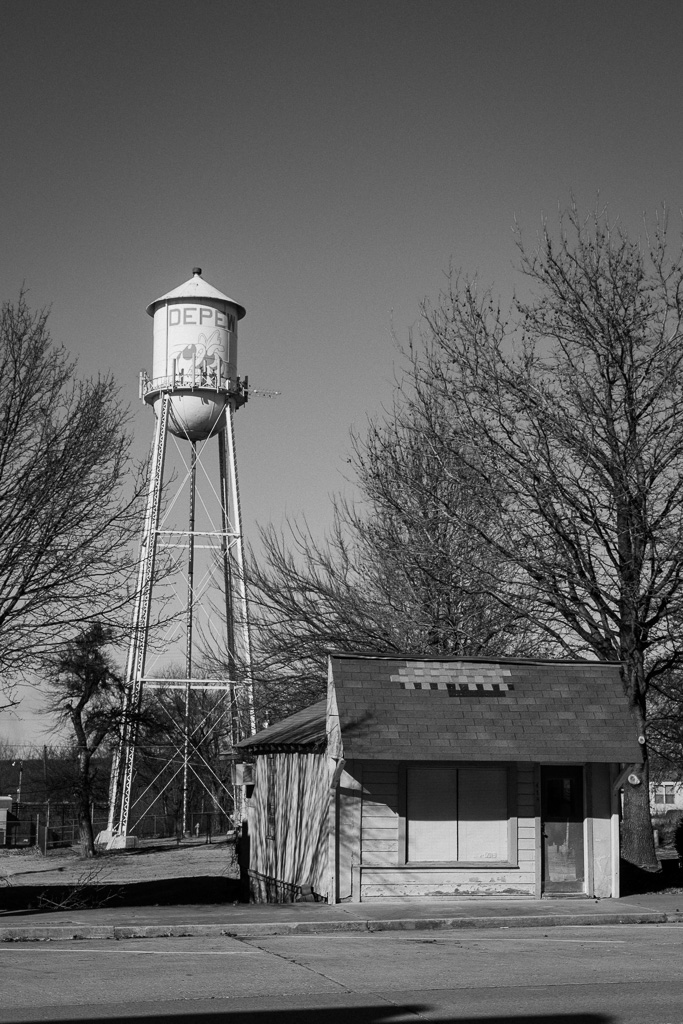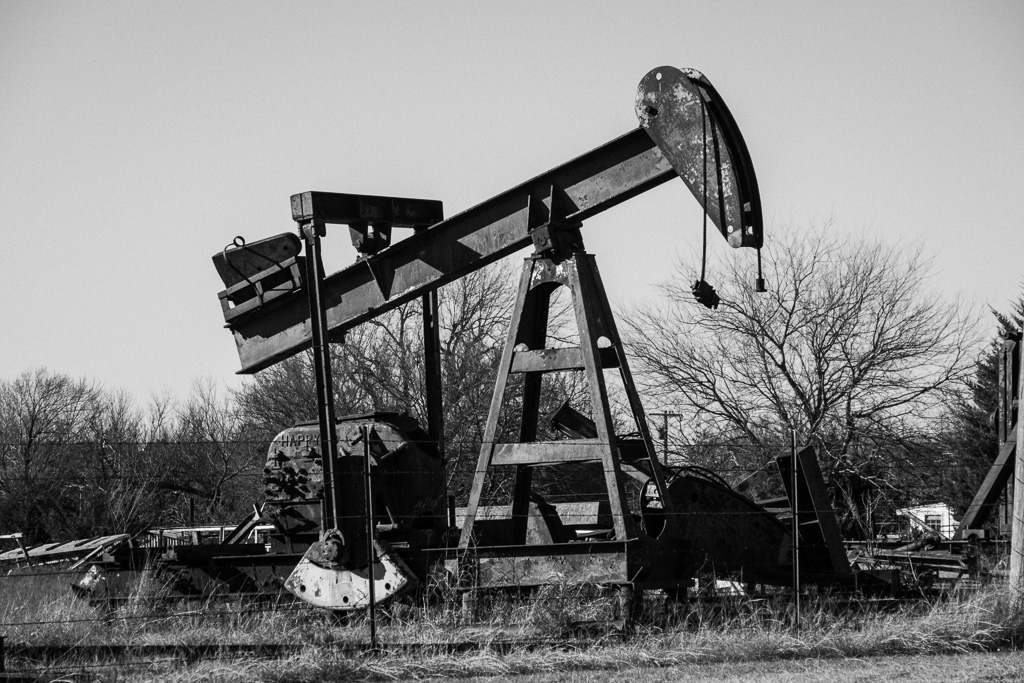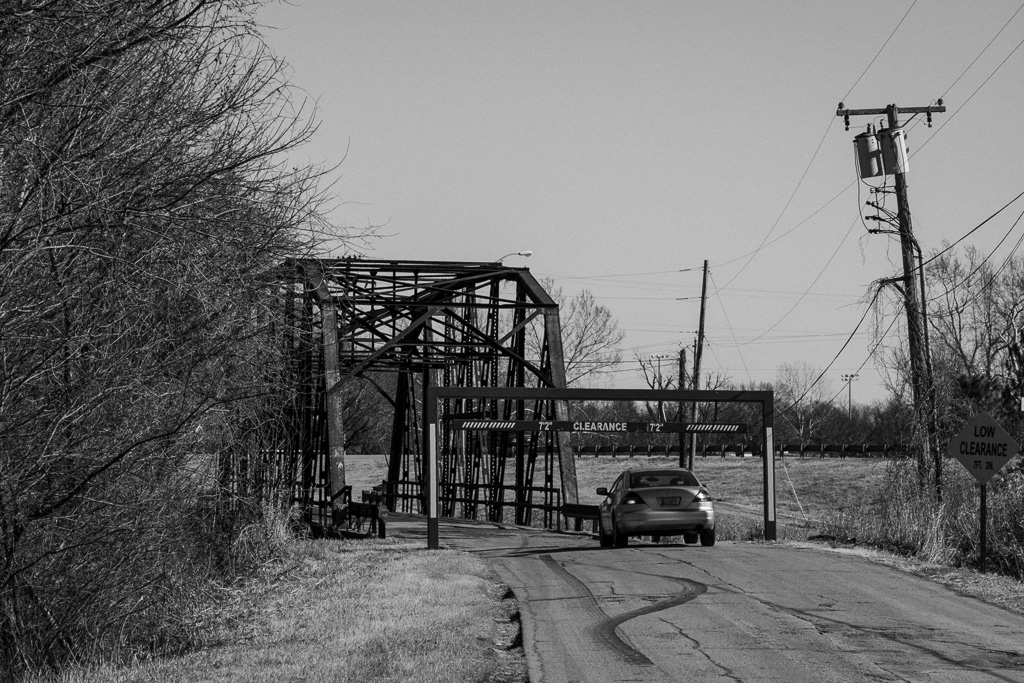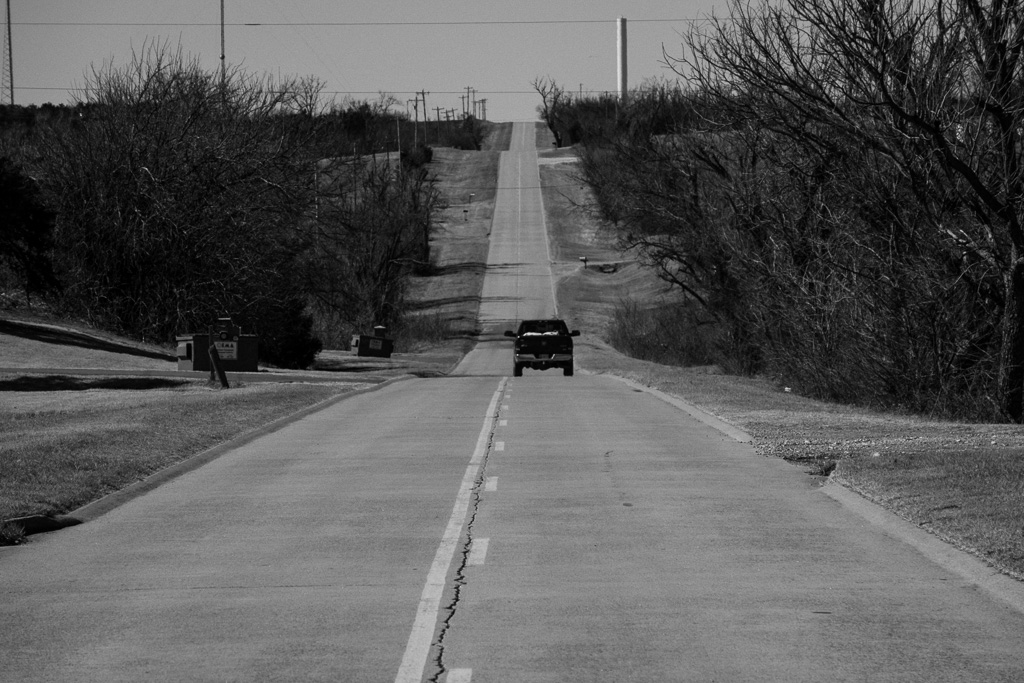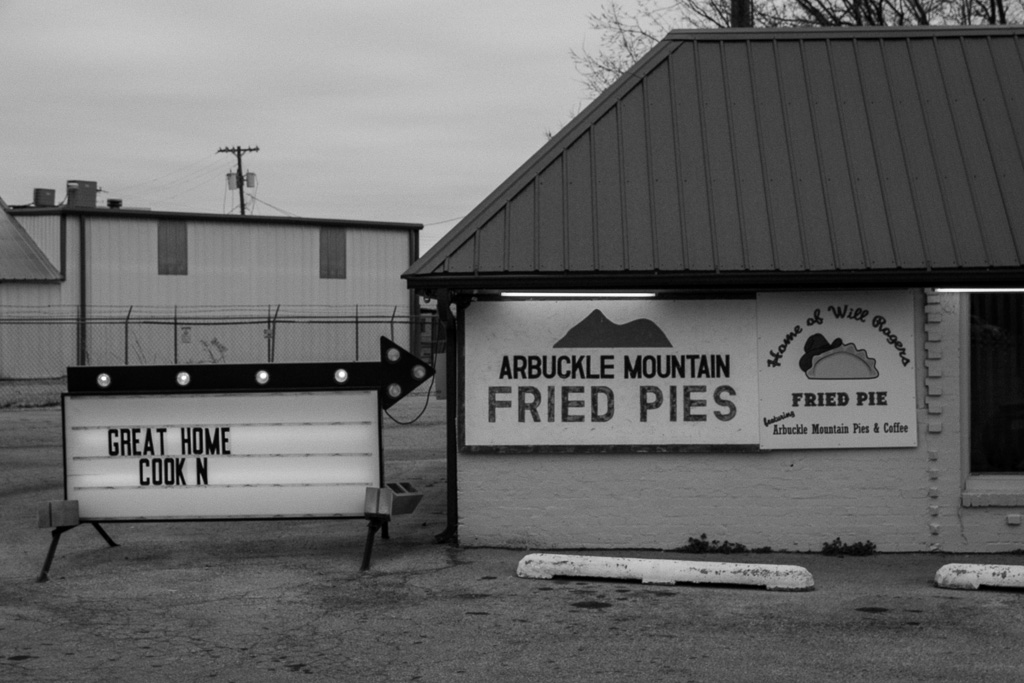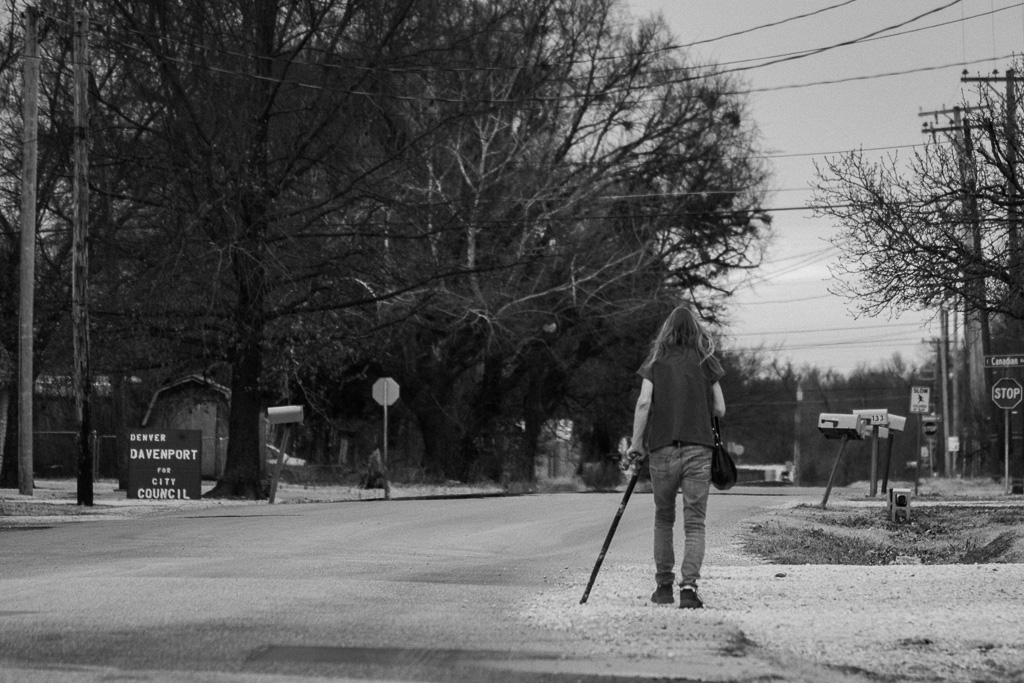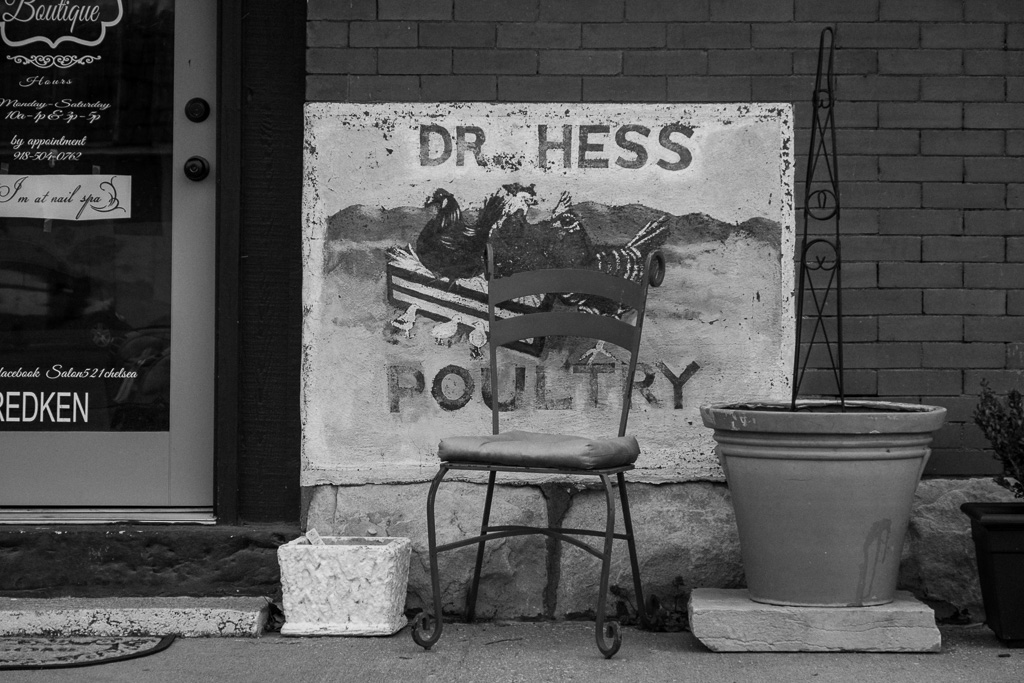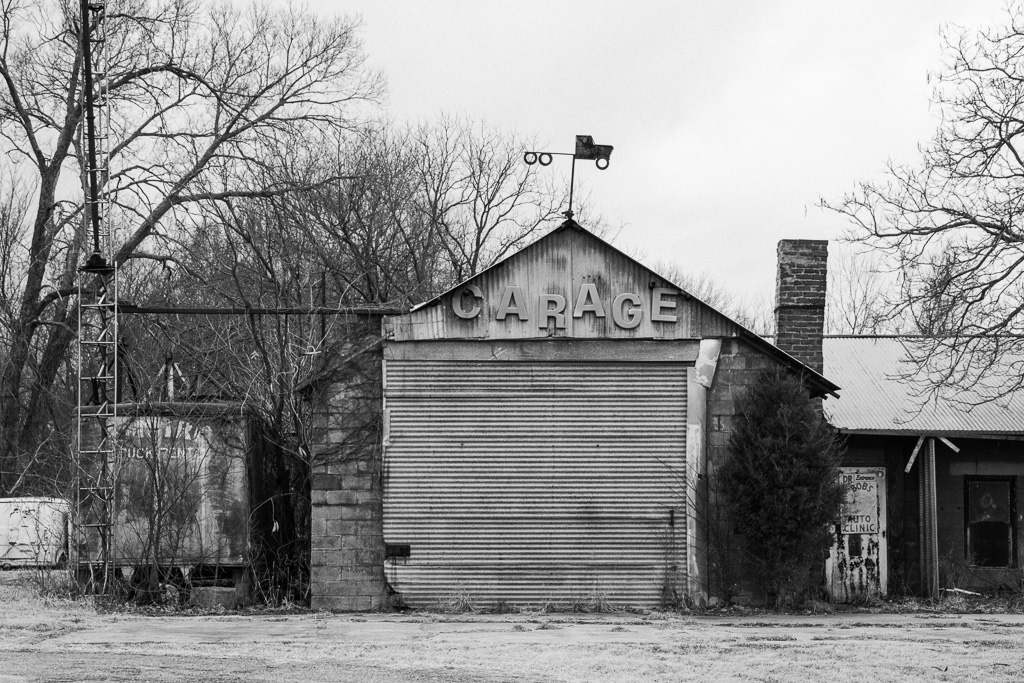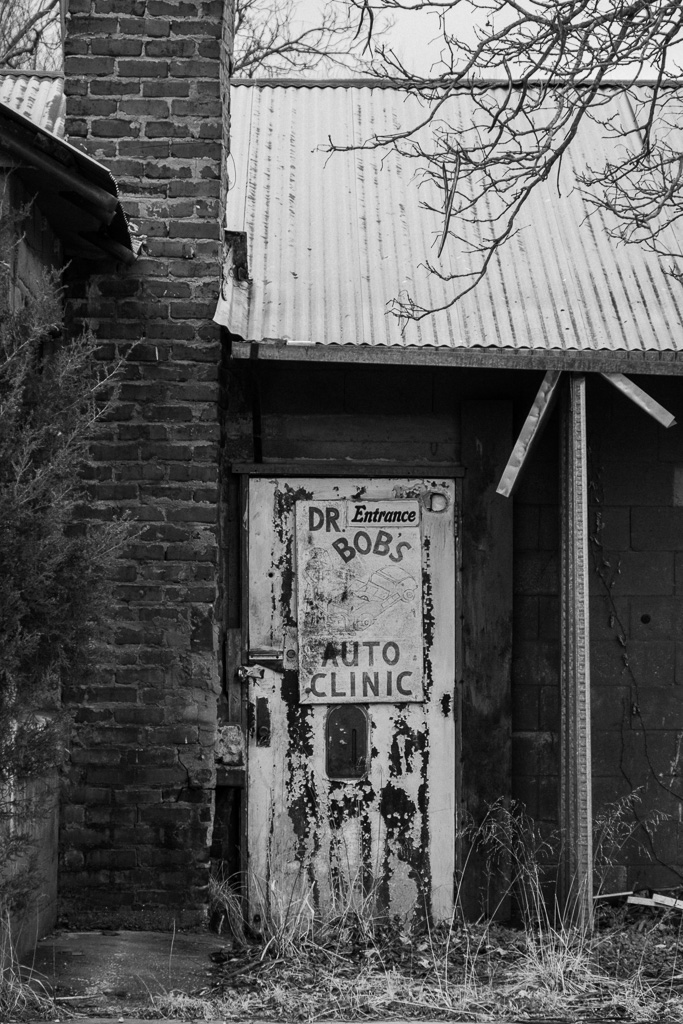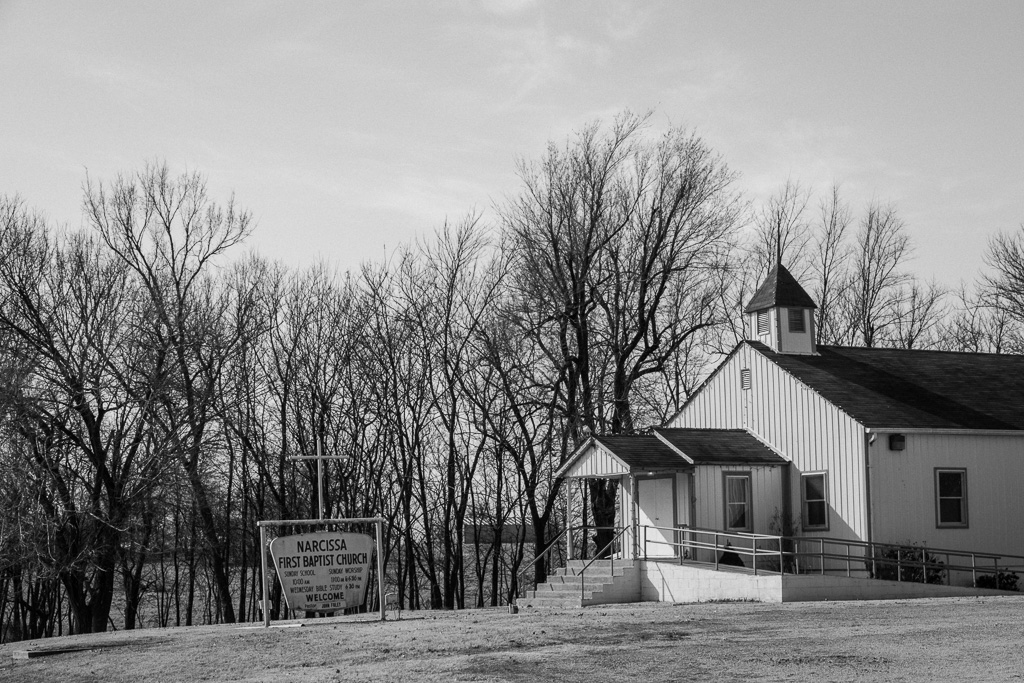 The Grapes of Wrath.
The Grapes of Wrath.
Rural Oklahoma along Route 66, in February 2017.
My Route 66 posts so far have been east-to-west. These are west-to-east (with some rearrangement here and there for thematic reasons).
Why start in the west?
The western part of the state was the worst hit by the long drought and horrific dust storms of the 1930s. Western Oklahoma (and especially the Panhandle), together with the Texas Panhandle and adjoining parts of New Mexico, Colorado, and Kansas, were the heart of what became to be known as the “Dust Bowl”. They were bad years for this part of the US.
John Steinbeck wrote about it in “The Grapes of Wrath”. Woody Guthrie – born in Okemah, a small town in Okfuskee County, Oklahoma – sang about it. The great Dorothea Lange photographed it.
The wind lifted the dry, drought stricken topsoil into the air as soil dust creating “black blizzards” (also called “black rollers”). Agriculture was devastated. Parts of the Dust Bowl were more like a moonscape.
An estimated 15% of Oklahoma’s population – according to one of my guidebooks about two-thirds of a million Oklahomans (also called “Okies”) – fled the state with many heading for California and on Route 66.
Many of these were taken in ghost towns (or near ghost towns) along the way. Little towns like Texola. Kendrick. Canute. Erick. Or, in some struggling larger communities, such as Sayre. There are various reasons for the depopulation of the countryside and decline of these places. Urbanization. Mechanization of farming. Factory closures. The interstate bypassing 66. And, of course, the economic ravages of the Great Depression and the Dust Bowl years.
The Beckham County courthouse in Sayre made a 30-second appearance in John Ford’s film, The Grapes of Wrath (1940) – one can see it to the left above in the historic photo and below in my photos.
A set of photos like this can present a very skewed version of reality. There were lots of modern and attractive farms and houses along the way. Some of the towns and cities look to be doing quite well. I even passed a sign for a turnoff which said “Exit 53: Oklahoma Spaceport”. What I am getting at is that in rural Oklahoma it doesn’t all look like what is in these pictures, although I saw a lot of apparent poverty in what seem to be struggling communities. There were indeed many abandoned homes (often with trailers by the old homes) along the way, as in Missouri and that little bit of Kansas I passed through. Prosperity seems very uneven. Anyway, what I am trying to evoke in this set is not modern Oklahoma.
Who are the people in this set?
I stopped to ask someone for directions to the courthouse (Google Maps was not being helpful). He said with a troubled look on his face that he was just coming from there. I don’t make this stuff up. We talked for a bit. He’s lived there in Sayre all his life.
The two Beckham County sheriffs called over to me when I was photographing the Sayre courthouse across the street from where they were to let me know the view from the parking lot of the County Sheriff’s Office was a good one. We had a good chat. They were super friendly. They say crime is up the last couple of years. Especially violent crime. Used to be mostly property related crimes.
When I stopped to get a picture of a weather-beaten farm near Canute, a farmer drove over in his tractor. Paul. (I don’t just know that from his shirt – I usually introduce myself and try to get a first name; I write down my notes right away in Notes on my iPhone.) I asked about the history of the farm I was photographing (immediately preceding his picture). He knows the family. He confirmed that it dates back to the Dust Bowl period but the family made it through and did not leave. The damage to the barn is from a tornado – that part of Oklahoma is also known as “Tornado Alley”.
As I headed west I saw more oil and gas activity. The farmer on his tractor passing a venting drilling rig was not an unusual sight. There were some oil pump jack graveyards along the way. I also spotted quite an impressive car and truck graveyard – a small lake of cars – which had the added attraction of a whole line of salvaged weather vanes in front at the road.
To end what is getting to be an overly long narrative (and is about to get longer) John Steinbeck writes in “Grapes of Wrath” about the journey from Oklahoma on Route 66 – the road I took last week (but with a very different experience from that so vividly described below). He devoted a chapter to the “mother road”.
“66 is the path of a people in flight, refugees from dust and shrinking land, from the thunder of tractors and shrinking ownership, from the desert’s slow northward invasion, from the twisting winds that howl up out of Texas, from the floods that bring no richness to the land and steal what little richness is there. From all of these the people are in flight, and they come into 66 from the tributary side roads, from the wagon tracks and the rutted country roads. 66 is the mother road, the road of flight…
The people in flight streamed out on 66, sometimes a single car, sometimes a little caravan. All day they rolled slowly along the road, and at night they stopped near water. In the day ancient leaky radiators sent up columns of steam, loose connecting-rods hammered and pounded. And the men driving the trucks and the overloaded cars listened apprehensively. How far between towns? It is a terror between towns. If something breaks – well, if something breaks we camp right here while Jim walks to town and gets a part and walks back and – how much food we got?
Listen to the motor. Listen to the wheels. Listen with your ears and with your hands on the steering wheel; listen with the palm of your hand on the gear-shift lever; listen with your feet on the floor boards. Listen to the pounding old jalopy with all your senses, for a change of tone, a variation of rhythm may mean—a week here? That rattle—that’s tappets. Don’t hurt a bit. Tappets can rattle till Jesus comes again without no harm. But that thudding as the car moves along—can’t hear that—just kind of feel it. Maybe oil isn’t gettin’ someplace. Maybe a bearin’s startin’ to go. Jesus, if it’s a bearing, what’ll we do? Money’s goin’ fast.
And why’s the son-of-a-bitch heat up so hot today? This ain’t no climb. Le’s look. God Almighty, the fan belt’s gone! Here, make a belt outa this little piece a rope. Le’s see how long—there. I’ll splice the ends. Now take her slow—slow, till we can get to a town. That rope belt won’t last long.
’F we can on’y get to California where the oranges grow before this here ol’ jug blows up. ’F we on’y can.”
Extracted from John Steinbeck, The Grapes of Wrath (1939): Chapter 12, “Highway 66”.

